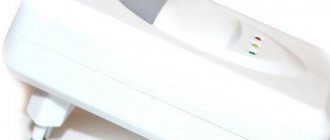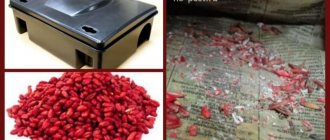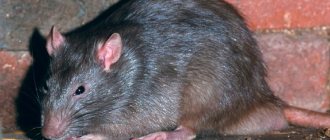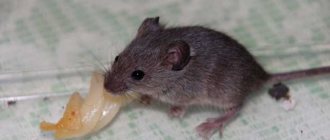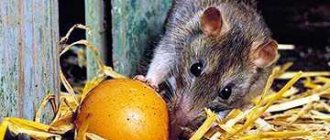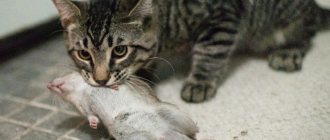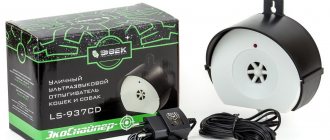Since ancient times, humanity has tried to fight rodents. Today, many devices have been invented that can destroy or repel pests. However, the question is how to lure a rat into a trap? Which baits will be more effective?
In fact, traps can be different, but what the animal will be caught with is often individual. The result depends on the product.
Many people are mistaken in believing that pests are readily caught on cheese. However, in reality, mice and rats preferentially choose food that is closer to their habitat. Considering that rodents can live in various conditions: sewers, gardens, houses, basements, landfills, it is difficult to believe that there are milk-containing products where they are found.
Experts say mice love plant foods: grain, flour, bread, pastries and others. And what do rats, frequent inhabitants of houses and cottages, like? Rather, they will prefer products of animal origin: lard, meat, sausages, and so on. But in the absence of food, both of them can get used to eating whatever they want. Thus, to get rid of rodents, you must take a personalized approach.
In addition, their sense of smell is quite well developed, and an unfamiliar product will immediately scare them away. Food should be truly nutritious and flavorful. Although, on the other hand, hunger can force mammals to change their preferences and eat anything, for example, cheese or poisoned grain.
The key to success in catching rats at home is the naturalness of the product. The most important thing is the smell that the rodent will feel even in the farthest corners of the house or garden.
Bread crust and sunflower oil
Sometimes the solution to a problem is so simple that one cannot believe in a positive result. Many people experiment with varieties of cheese and sausage, trying to lure pests into a trap. Meanwhile, rural residents have long identified the leader among mouse baits. They, like no one else, know what a mouse invasion is and how to fight it.
The mouse brethren are best caught on bread with a drop of sunflower oil. An important point is that the products must smell. It is recommended to use fresh white bread, or rather, its crust. Also, not any oil will do, but only unrefined sunflower oil. As an alternative, you can use refined oil after frying the meat.
Some people put food separately in the mousetrap - one bread or one butter. This can also be done, but then the effectiveness of the bait decreases.
Folk recipes
Home methods for rats You can remove rats from the basement using folk remedies as quickly as using store-bought poison. To do this, you need to know what rats are afraid of.
- Ash drives rats out of the cellar, destroys harmful insects, and does not threaten human life. Sprinkle a thin layer over the entire floor of the cellar or along the walls. The ash sticks to the paws and stomach, irritates the skin, and causes a terrible burning sensation. The rat tries to get rid of the pollution, the ash ends up in the stomach. Intestinal upset appears. Pain drives the rodent out of the room; repeated repetition of the situation forces the rodent to look for a new place to live.
- In the basement of a private house, you can get rid of rats with flour and plaster of Paris. A reliable method with minimal costs. Mix in equal proportions and place in a shallow container. When gypsum gets inside, it hardens. Along with it are the internal organs. To make the process go faster, place a container of water in close proximity.
- If there is a rat in the cellar, you can drive it out with specific odors. The rodent cannot tolerate strong aromas. Moisten a rag in kerosene, ammonia, naphthalene, or solvent. Lay out on the floor. You can remove rodents with peppermint, garlic, and pine.
- The rat in the basement is constantly looking for food. You can treat her to a fragrant wine cork fried in lard. It should be crushed first. Give the rodent a treat. The plug in the stomach will begin to swell, lead to significant deformation of the internal organs, and block breathing.
If the rats bypass the poison and do not fall into traps, you can build a trap out of water. Take liquid into a deep container, spread straw on top, pour a few tablespoons of sunflower oil. Scatter wheat grains in the center. Place a ladder to the container. You can catch the biggest rat in a bucket.
Salo
Few city residents know that birds and rodents love to pamper themselves with tasty, aromatic lard. The fact is that they perfectly identify high-calorie foods that will keep you full for a long time and give you strength. But not any lard is suitable for them - they will probably bypass old, salted and bad-smelling lard. As well as smoked, obtained using chemicals. The animal will not eat chemical products so as not to harm itself. Unlike people.
To catch a mouse, it is better to use as bait:
- fresh aromatic lard;
- lard.
If you only have salted or odorless lard, try lightly frying it in sunflower oil. To save money, you can also put skins with remaining lard in the mousetrap. The main advantage of such bait is that it does not spoil for a long time and remains attractive for a week, or even more.
Set up an experiment. Place a piece of smoked lard or bacon in the mousetrap. If a mouse “bites” on it, it means the product is natural and people can eat it without fear. It’s better to leave the skins for rodents.
Baits for catching rats
Any bait should attract rats so that they not only approach it, but also want to try it. At the same time, it is important to make sure that the rat is no longer able to leave after eating. It’s worth noting right away: no matter how tasty the food is for a rodent, it will never go into a typical trap like a rat trap, because it will sense an obvious threat. It is best to place safe baits without poison or traps for the first few days so that the rat does not feel threatened.
After a couple of days, you can put the same bait, but on a glue trap. The rodent will stick and will not be able to escape. In this case, of course, there is a squeak and loud noise from the caught animal, but it certainly won’t run away anywhere. Another option: buy a cage trap. Nowadays there are a lot of them on sale and they all operate on the following principle: the rat runs inside, eats the bait, and the door slams. A good option for those who do not want to kill an animal, but want to take it away from home.
Glue trap
The bait can also be used to manually catch an animal during the day. You need to put aromatic yogurt in a plate, pour sunflower oil or beer so that the rat runs out of the shelter. It is important that the bait must be liquid so that the rodent cannot take it away with it. You need to catch it very carefully: animals do not like being driven into a corner and become extremely aggressive. To catch a rodent, you can use a towel folded in two layers.
OUR READERS RECOMMEND!
To get rid of rodents, our readers recommend the Pest-Reject repeller
. The operation of the device is based on the technology of electromagnetic pulses and ultrasonic waves! Absolutely safe, environmentally friendly product for humans and pets. Read more here...
Seeds
Sunflower seeds are another favorite treat for mice. Before eating, they clean them by holding them with their two front paws.
It is not necessary to peel the seeds for bait. Any seeds will do - processed or not. You can fry them before putting them in the mousetrap. When exposed to heat, oil will be released and the seed will smell stronger.
The cake also has a strong smell. This is what is usually used in villages.
Nuts
Mice love nuts no less than seeds. They gnaw through the thick shell on their own. But shelled nuts will attract attention faster.
For bait you can use:
- walnut kernel;
- peanut;
- peeled hazelnuts.
Naturally, nuts should be without spices. Those sold with beer, with various flavoring additives, will not be suitable.
Dog or cat food
It is known that rural and urban rodents are very different in their preferences. They choose the food that they were used to eating in childhood and which has the highest calorie content. Often this product is cat or dog food. Lard and sausage in the apartment are securely hidden in the refrigerator, but the pet’s bowl is in the public domain. Plus, pet food smells strong. Walking past it is a real challenge for a mouse.
Recipe from the Vredstop website: 1 oatmeal cookies, 3 corn sticks, 1 teaspoon of halva, 10 peeled seeds. Crush the mixture in a mortar and use it as bait for rats and mice.
What smell attracts mice?
Rodents have poor eyesight, so other senses are highly developed: smell, touch, hearing. Mice are selective eaters. The smell of their favorite foods lures them in, while dangerous substances repel them. To know what to catch rats or mice with and what baits are guaranteed to work, you need to study the scents that attract them.
Rodents like the smells of the following foods:
- bakery products;
- vegetable oils;
- salted fish;
- meat;
- lard;
- sausages;
- snacks (chips, nuts, crackers);
- beer.
Note! The fresher the product, the stronger its aroma. If a mouse smells the chemicals, it will pass by.
Rats are less picky; they eat everything. But if one animal feels bad after eating, the rest will not eat the food.
Features of catching rodents
The first thing to consider when trapping rodents is that the approach to mice and rats is different. Seeing nibbled bread, a pack of cereal, or finding excrement, it is impossible to understand what kind of enemy you are dealing with. It can be either a mouse or a rat. The first one is easier to catch.
- Mice are quite indiscriminate eaters; they love all the foods listed above, as well as fruits, pastries and sweets.
- Rats are more cunning and selective. It is best to catch them with sausage, lard, or fresh minced meat with onions. It is recommended to place the rat trap at the bottom of the bucket. These rodents have become accustomed to pulling out the bait by sharply jerking it to the side. In a bucket where space is limited, this number will not work.
Among other things, when choosing bait you should take into account the design of the trap:
- If it has a hook, then you need to use a dense product (lard, sausage). The animal must certainly pull the bait. In this case, she will dine on seeds and nuts right in the mousetrap and run away safely.
- If the trap is triggered by the weight of the rodent and it only needs to get into it, you can use all of the above baits.
Catching mice with glue
In addition to mousetraps, there are so-called sticky traps. They come in the form of a “book” coated with a very sticky substance.
You can also purchase glue for catching mice and rats separately. It can be applied independently to A4 sheets or cardboard. It’s very easy to catch rodents with glue: once a mouse steps on the cardboard with one paw, it will never come off it. To do this, the trap is placed in the path of pest movement - along the walls, under the refrigerator.
It is not necessary to use bait in a sticky trap. But if you want, it is better to put in the center of the sheet something that does not spoil for a long time - lard, a crust of bread with butter. If you put an apple or sausage there, you will soon regret it: they will spoil on the second day, and it is not so easy to take them out without getting dirty with glue.
Homemade rat traps
You can make effective traps with your own hands from available materials. You just need to put in a little effort and ingenuity, and the result will not take long to arrive.
Bucket rat trap
It doesn't take much time to create. The base is represented by an ordinary bucket; both metal and small plastic ones are suitable. A concentrated salt solution is poured into the container. The bucket should be fairly stable so that it does not tip over when hit by a rat.
To outwit the animal, you need to pour seed husks and sawdust into the water. A thick layer is not required. The salt will push the contents to the surface and mask the liquid.
Next, bait in the form of slices of sausage or bread soaked in milk is placed in the container. An approach to the bucket is constructed from a thin plank or books, always at an angle. This way the pest will be able to get to the very edge of the container and then fall into the solution.
Fine mesh trap
Made from welded material with small cells. You will need tools with which the mesh is cut into rectangles with parameters 60x30x20 cm. The elements are connected using a welding machine.
The smaller the cell size, the greater the likelihood of catching a rat . For convenient use of the trap, a handle is built on top. In the front part there is a door that operates on a spring.
The bait is placed on a cord with a hook and is located at the back wall of the cage. The second end of the rope is fixed to the door. If the animal touches the treat, the rat trap will slam shut.
Rat trap made from a flowerpot and a plastic strip
No expensive equipment is required to catch pests. It is necessary to take a flower pot or other container with such weight that it cannot be turned over.
One end of a plastic bar or a regular ruler should be sharpened, and an attractive bait is attached to it.
The sharp part is installed on the edge, and a flowerpot is placed on top. One side of it should rest on the bar, the other on the surface of the floor or table in areas where there are especially many rats. Part of the ruler with bait is directed inside the pot.
There is a similar option using a cardboard box and a board. The method is popular because it does not require any cash costs, and similar elements can be found in every home.
What about cheese?
The idea that rats and mice love cheese most of all has spread thanks to cartoons. You can see a rodent chasing a cheese treat in Tom and Jerry, Chip and Dale, and Ratatouille. Perhaps a mouse with cheese looks more aesthetically pleasing than one with lard.
Be that as it may, real rodents don't like cheese. It is a myth. Of course, if the mouse is hungry, it may bite into a piece of cheese. But other baits work much more effectively.
If you decide to catch a mouse with cheese, use a smoked product. It attracts rodents much better.
What is the danger of rats and how can they get into your home?
Being a very prolific species, rats extremely quickly create entire colonies of rodents, which cause significant damage to your harvest and other food supplies. In addition, rodents can act as carriers of infectious diseases that humans become infected by coming into contact with objects on which animals have left microparticles of saliva, droppings and other waste products.
Another threat is a rodent bite. Animals rarely attack people, but if a rodent is driven into a dead end, it can attack a person.
The peculiarities of the rodent's anatomy allow it to penetrate literally into every crack: powerful and strong incisor teeth, the growth of which continues throughout the rat's life, are capable of chewing through even cement.
What will a rodent definitely not eat?
It is believed that mice and rats eat absolutely everything that catches their eye. They chew books, polystyrene foam, potatoes and other seemingly unattractive foods. But being smart animals, they sense that there is danger from mousetraps. They will never reach into a suspicious device for an unattractive, albeit edible, bait.
It is useless to put in a mousetrap:
- weathered cheese;
- spoiled sausages and frankfurters;
- dried baked goods;
- chocolate;
- old lard;
- crackers;
- spiced products.
Catching rodents using mousetraps is the best alternative to poisons. A poisoned mouse can die anywhere, and finding it is not always easy. There will be a disgusting smell in the house, and corpses may end up in shoes and food. It is much better to use a baited trap. With its help you can catch about 20 mice in just a day. The main thing is to use the right product. Use our list of baits. Change them periodically, and also move the mousetraps themselves. Although rodents are smart, the most cunning and dangerous animal on earth is man.
AfterText #1
Prevention
Very often the appearance of rodents has already been provoked. They come into houses from the street, this problem is especially relevant in the fall with the first cold weather. In apartments, these can be places above grocery stores or restaurants. To solve this problem, it is not enough to catch or poison a rat once; you need to take care of prevention:
- Perfect cleanliness. We are talking about small crumbs, garbage, and food leftovers in the sink or on the stove;
- Timely garbage collection. It must always be packed. It is best to take out the bags in the evening, because rodents are nocturnal animals;
- Cereals and other bulk products must be stored in closed containers. It is best to put them in glass or metal jars with durable lids.
Neatness, cleanliness, and attention to every detail helps prevent the appearance of rodents after the rats have been caught or poisoned.
The last factor is repairs. You should definitely try to seal all the holes and cracks through which pets enter the apartment. Modern building materials and techniques make it possible to do this and minimize the risk of such pests.

